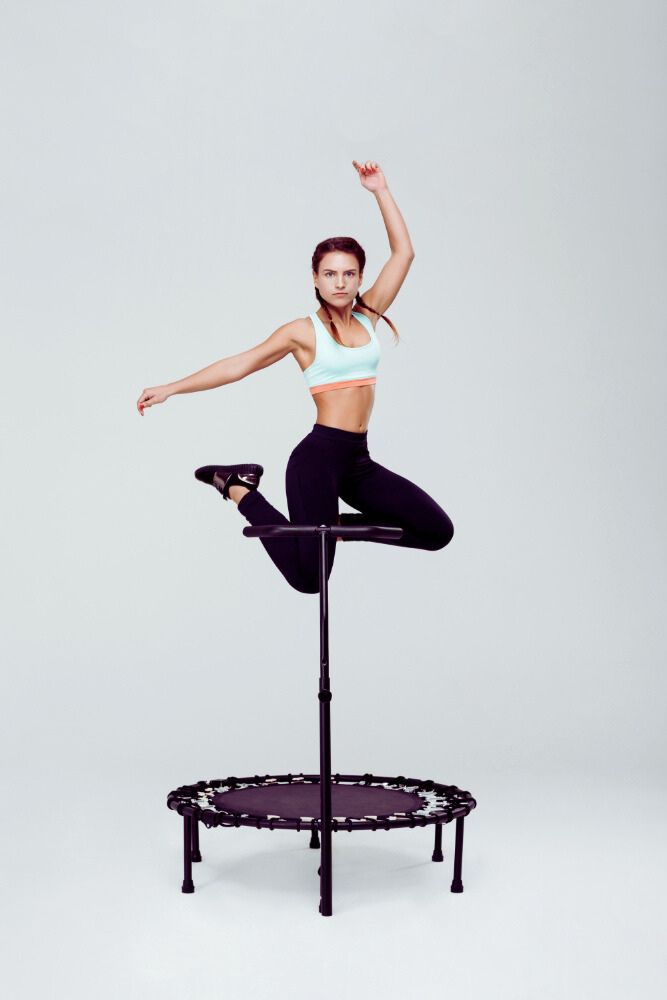Rebounding, or exercising on a mini trampoline, is a low-impact form of exercise that is gaining popularity due to its numerous health benefits. A rebounder is a small trampoline that is designed to be used indoors, making it a convenient exercise option for people who may not have access to a gym or outdoor space.
Using a rebounder can provide various benefits for the cardiovascular, lymphatic, and musculoskeletal systems, as well as mental health. This form of exercise is suitable for people of all fitness levels and can be easily modified to meet individual needs.
In this article, we will explore the many benefits of using a rebounder, including how it can help with weight loss, improve balance and coordination, reduce cellulite, and much more. We will also discuss how rebounders can be used in small spaces and easily stored, making them a great option for people with limited space.
Whether you are new to exercise or a seasoned fitness enthusiast, incorporating rebounding into your fitness routine can provide a fun and effective way to stay healthy and fit.

Cardiovascular Benefits of a Rebounder
Rebounding on a mini trampoline is a great way to improve cardiovascular health. The repetitive bouncing motion increases heart rate and oxygen uptake, making it an effective form of cardio.
It is also a low-impact exercise that puts less strain on joints than running or other high-impact exercises. Regular rebounding can help to improve circulation, reduce blood pressure, and lower the risk of heart disease.
Lymphatic System Benefits of a Rebounder
The lymphatic system is responsible for removing toxins and waste from the body. Rebounding on a mini trampoline is an effective way to support the lymphatic system. The bouncing motion stimulates the lymphatic system, helping to flush out toxins and waste.
Regular rebounding can help to boost immunity, reduce inflammation, and improve overall health.
Musculoskeletal Benefits of a Rebounder
Rebounding on a mini trampoline is a great way to strengthen muscles and improve balance. The bouncing motion engages multiple muscle groups, including the core, legs, and glutes.
It is also a low-impact exercise option that is gentler on joints than other forms of exercise. Regular rebounding can help to improve bone density, reduce the risk of osteoporosis, and improve overall strength and balance.

Mental Health Benefits of a Rebounder
Rebounding on a mini trampoline is not only good for physical health but can also have mental health benefits. The rhythmic bouncing motion can be meditative and help to reduce stress and anxiety. Moreover, it can be a fun and enjoyable form of exercise that can boost mood and improve overall well-being.
Using a Rebounder in Small Spaces and Easy to Store
One of the benefits of using a rebounder is that it can be used in small spaces and easily stored. Unlike larger exercise equipment, a rebounder takes up minimal space and can be stored in a closet or under a bed. It is an excellent option for those who live in apartments or have limited space for exercise equipment.
Low-Impact Exercise Option
Rebounding on a mini trampoline is a low-impact exercise option that is gentler on joints than other forms of exercise. It can be an excellent option for people with joint pain or mobility issues who may find other forms of exercise too strenuous. Additionally, rebounding can help to improve flexibility and range of motion, making it a great option for those with mobility issues.
Conclusion
Rebounding on a mini trampoline is a fun and effective way to improve overall health and fitness. It is a low-impact exercise option that can be used in small spaces and easily stored. Regular rebounding can help to improve cardiovascular health, support the lymphatic system, strengthen muscles, and boost mood and overall well-being.
Whether you are looking for a new form of exercise or want to add some variety to your current routine, a rebounder is definitely worth considering.
Frequently Asked Question
How often should I use a rebounder?
The frequency of using a rebounder depends on your fitness goals and physical abilities. For beginners, starting with a few minutes a day and gradually increasing to 30 minutes per day, three to five times per week, is recommended.
Can a rebounder help me lose weight?
Yes, rebounding can be an effective way to lose weight. The repetitive bouncing motion helps to burn calories, boost metabolism, and increase heart rate. However, it is important to combine rebounding with a healthy diet and other forms of exercise for optimal weight loss results.
Is rebounding safe for people with joint pain or mobility issues?
Rebounding can be a safe and effective form of exercise for people with joint pain or mobility issues. It is a low-impact exercise option that puts less strain on joints than other forms of exercise. However, it is recommended to consult with a healthcare provider before starting any new exercise program.
Can rebounding help with cellulite reduction?
Rebounding can help to reduce the appearance of cellulite by improving circulation, reducing inflammation, and supporting the lymphatic system. However, more than rebounding alone may be needed to eliminate cellulite. It is vital to combine rebounding with a healthy diet and other forms of exercise for optimal results.
Last Updated on August 25, 2023

